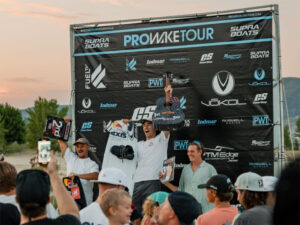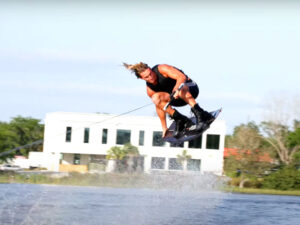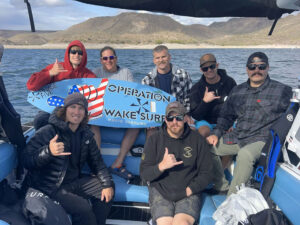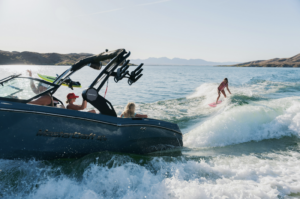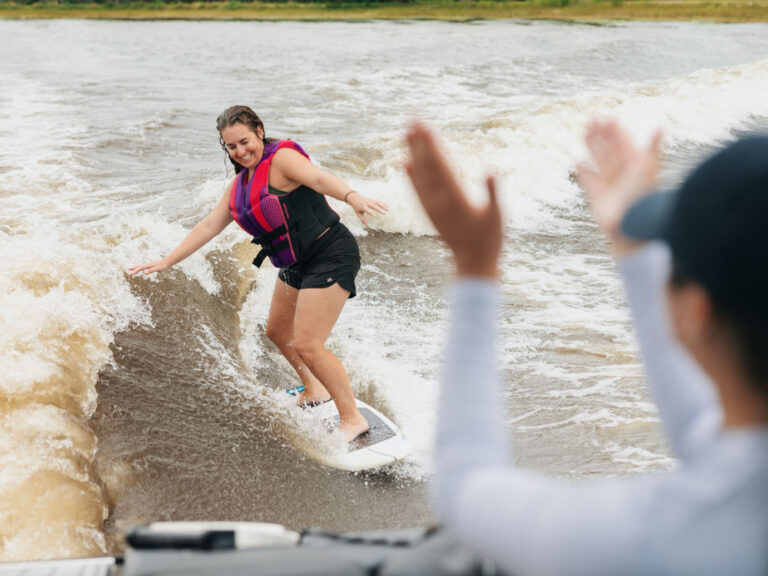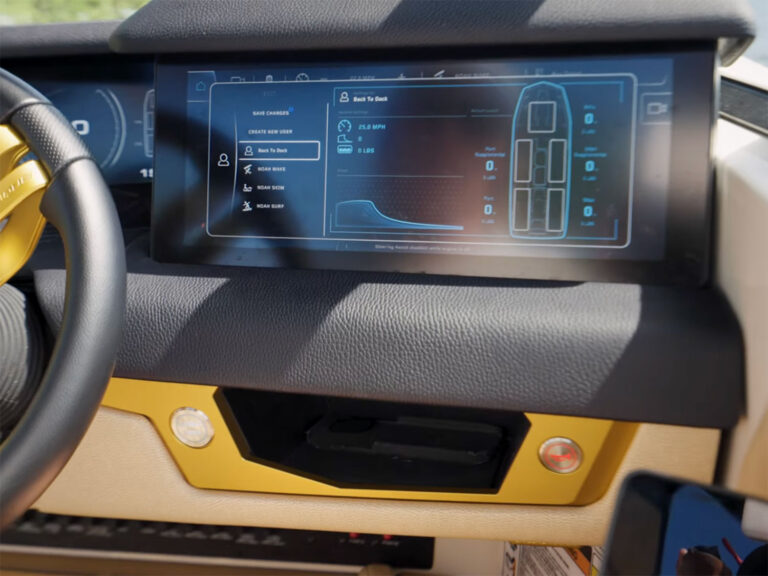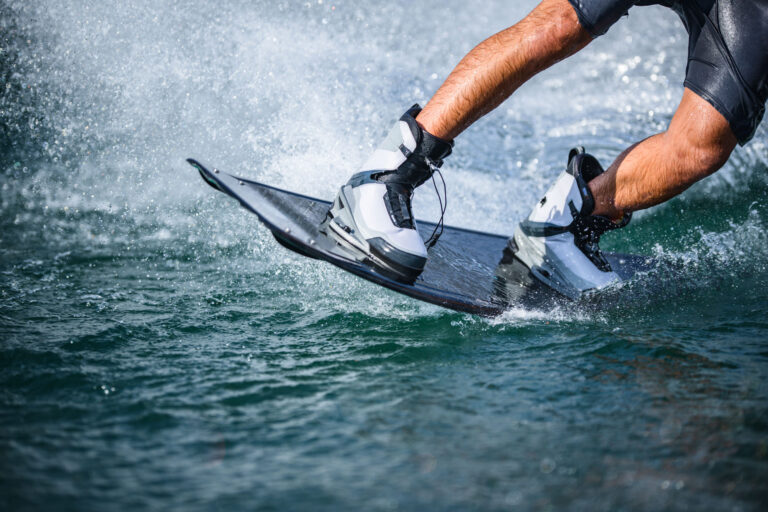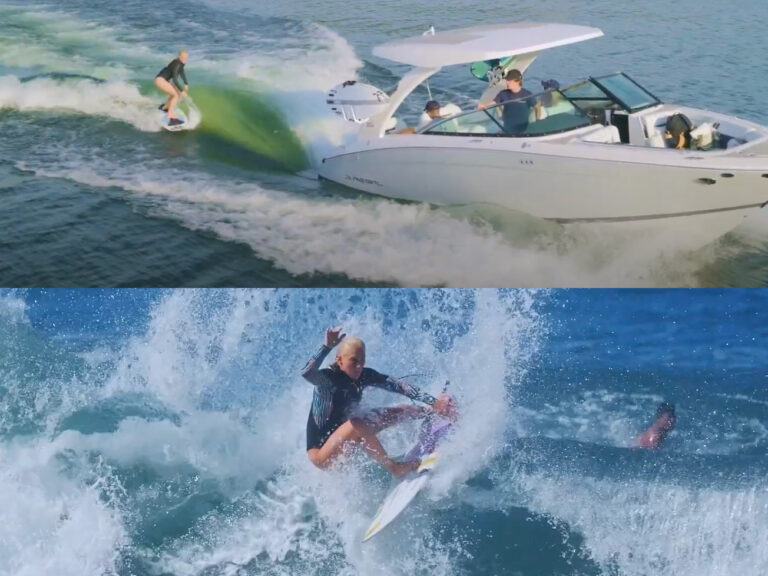Some of Today’s Top Innovations & Why They Matter to You
The improvements in wakeboat technology over the past five years alone have been staggering. Each manufacturer is in a seemingly never-ending battle with the rest of the industry to continually figure out ways not only to improve the ride, but also to drastically change both the onboard and on-water experiences.
From hull designs and advancements in wake-shaping features, to touchscreens, more comfortable seating, automatic towers and more, the technology that is packed into today’s top boats is amazing.
While the investment of a new boat can be intimidating, there is one thing to really note, and that is just how much technology has evolved in a short period of time and how much that technology really can impact your time on the water.
We’ve taken some of the top tech from a variety of boats and broken it down into how it affects you: an “On-Board” tech for when you’re riding and an “Off-Board” tech for when you’re off your board (hanging out in your boat). Take a look and see just how much some of these boats’ latest innovations can potentially enhance your experience.
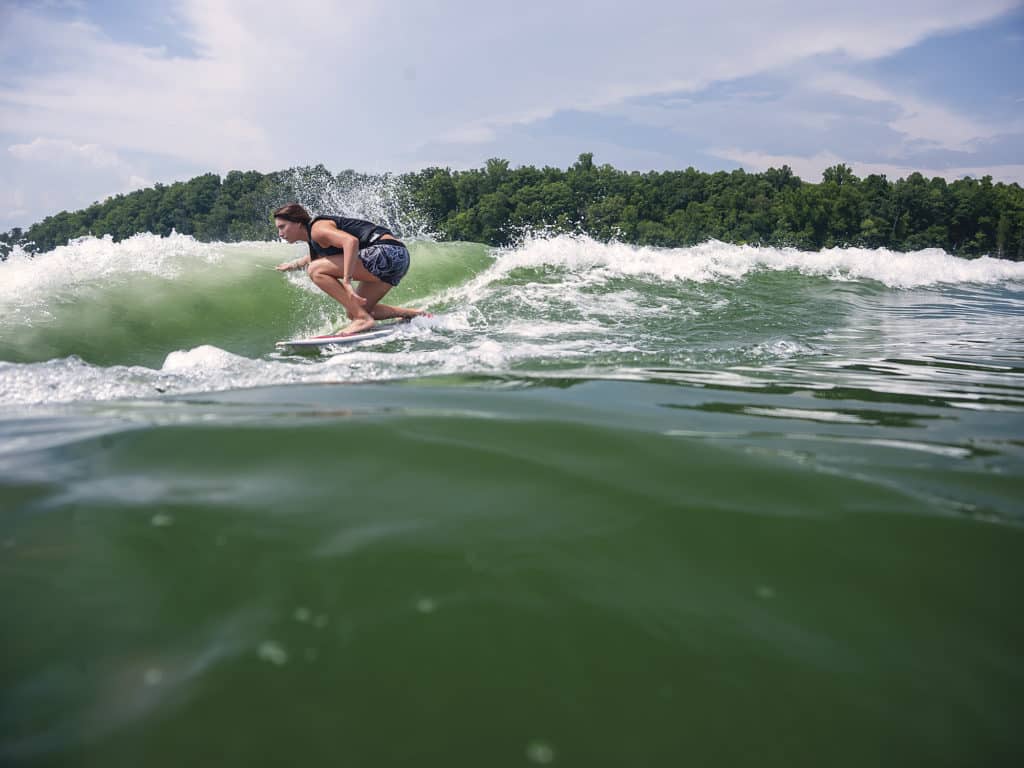
ON-BOARD:
Malibu/Axis Surf Gate
When it arrived on the scene in 2012, Surf Gate helped launch a trend in automated wake enhancement that is still growing to this day. By utilizing two hydraulic plates on each side of the boat, Surf Gate allows you to keep your boat evenly weighted so you don’t have to shuffle giant ballast bags of water around to switch from wakeboarding to wakesurfing. Not only does this save time and energy, but it is more effective. By dragging one of the plates through the water, the convergence point of the water behind the boat is shifted, thereby creating a very surfable wave. With the push of a button, Surf Gate can switch from one side of the boat to the other, so the rider can transfer over the rooster tail and switch up his riding. Go from frontside to backside, throw a trick over the middle — the options are endless. If you’ve wakesurfed before but never had the opportunity to try transfers, you need to. It adds a whole new element of fun to surfing the endless wave.
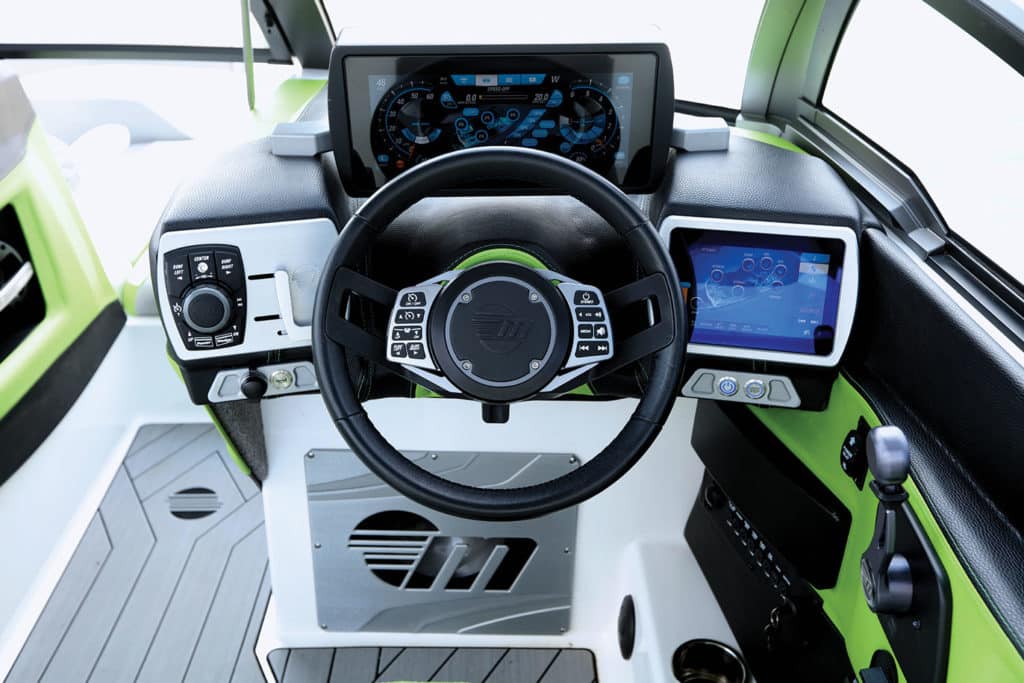
OFF-BOARD:
Malibu Command Center
Ever wondered what it would be like to have Tron as part of your wakeboat experience? Look no further than Malibu’s Command Center dash. Straight out of the movie, the interface of the Command Center screams “from the future,” but it is straightforward and easy to use. The central screen, above the steering wheel, shows all the boat’s main gauges: speed, rpm, ballast, fuel and more. On the right, drivers can control GPS and navigation, stereo setting, and all other options such as lighting, heaters, blower and bilge pump. The Sport Dash option on the left is a unique knob that allows the driver to control several things by feel, without having to take his or her eyes off the water. Volume, track, boat speed, the pitch of the wedge, and on which side Surf Gate is engaged can all be adjusted with the dial.
WHAT JEFF LANGLEY THINKS:
“What’s great about Command Center is how easy it is to use. A lot of other boats’ systems require a lot of screen changes to make adjustments, but with the Command Center, everything is easily available.”
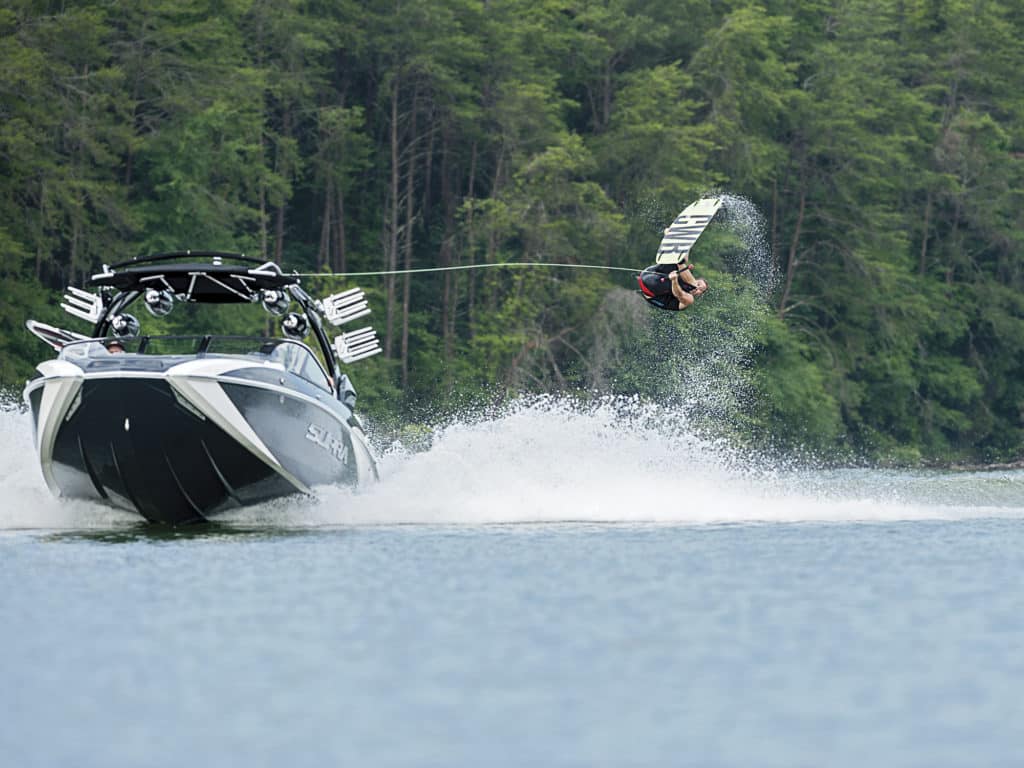
ON-BOARD:
Supra/Moomba AutoWake
AutoWake is exactly as it sounds, but it sounds much more simple than it really is. The technology, exclusive to Supra and Moomba, monitors the running surface of the boat and automatically adjusts ballast levels on the fly to maintain the optimal hull position for wakeboarding or wakesurfing. For years, riders have had to struggle with balanced wakes. A slight shift from a passenger to a different location in the boat could throw everything out of whack. That either meant making everybody sit still, or moving around lead bags or other types of weight to achieve the best wake for riding. AutoWake cures those problems. You say AutoWake, we say AutoThankYouVeryMuch.
WHAT TREVOR HANSEN THINKS:
“My favorite thing about AutoWake is how easy it is to always have the same wake or wave. Whenever you dial in what’s perfect for you, you can set it to memory and AutoWake will dial it up for you every time. You don’t have to worry about what settings you had where and when.”
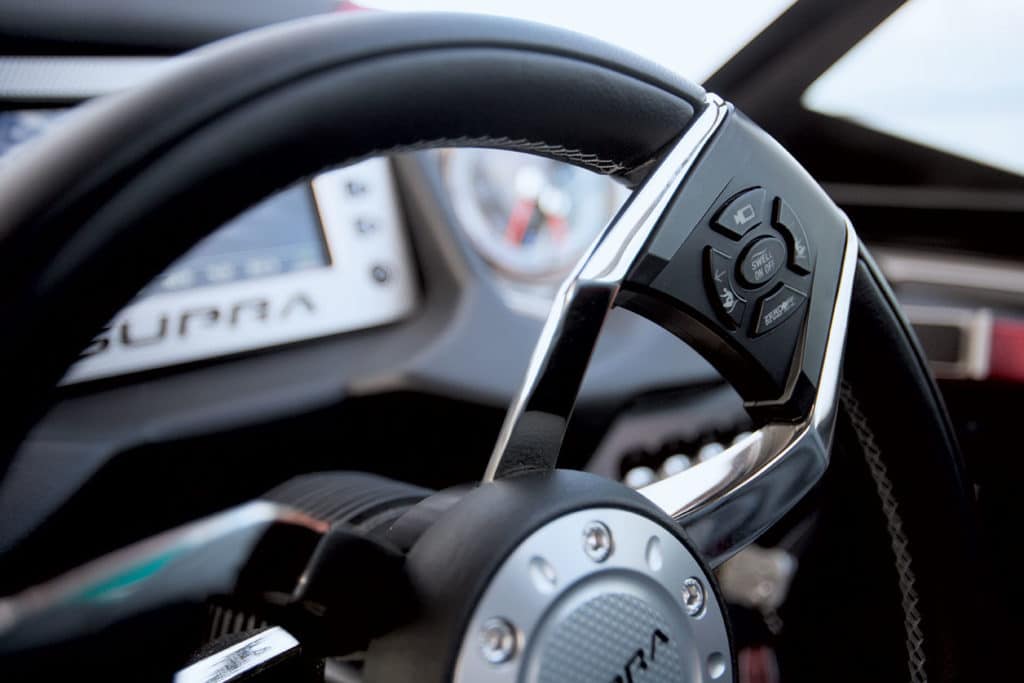
OFF-BOARD:
Supra Steering-Wheel Controls
Buttons have been on steering wheels for a long time in the automotive industry but never made their way to folks like us driving boats. The reasons have more to do with limitations in the steering columns and mechanisms themselves than anything else, but Supra finally found a way around it. The results are awesome and more subtly helpful than a lot of other gadgets we’ve seen recently. Being able to control not only something as simple as the music but also important aspects, like the surf and wake plates when a rider is riding, is awesome. A lot of today’s boats have creature comforts that aren’t always necessary or even the most justifiable, but the convenience of steering-wheel controls can’t be overstated. Just like with steering-wheel controls on your car, this helps you focus on the task at hand — no, not turning around and talking to your friends, but keeping your eyes ahead on where you’re going.
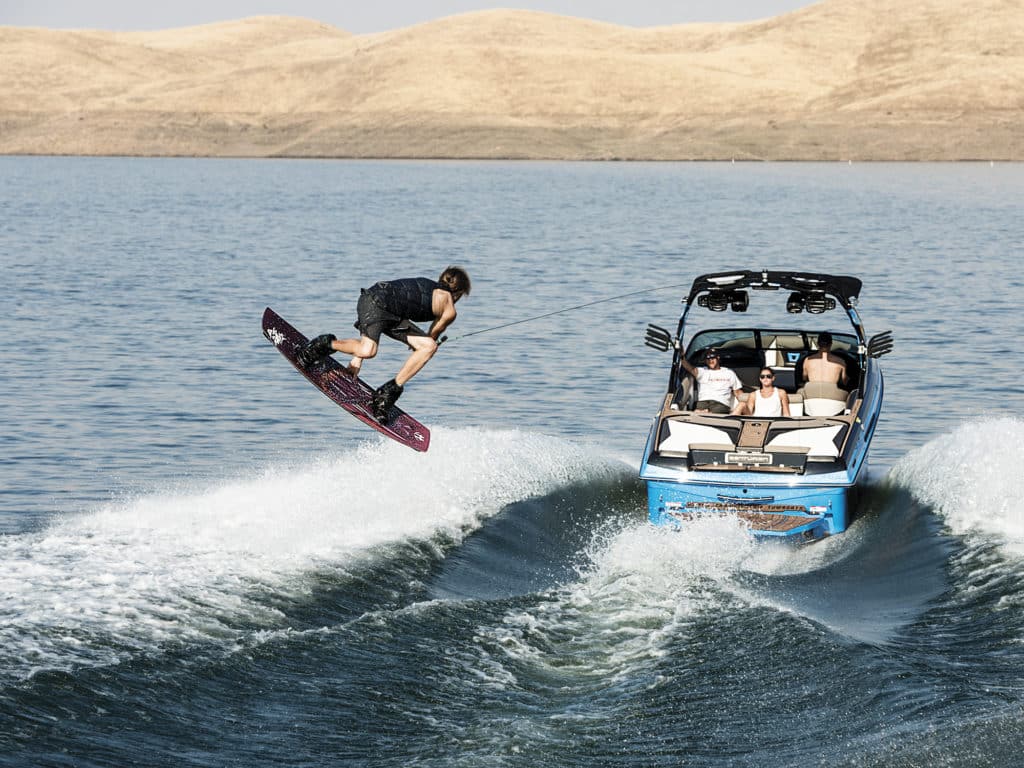
ON-BOARD:
Centurion Ramfill Ballast System
Introduced in 2013, Ramfill allows Centurion boats’ ballast tanks to fill quickly — much more quickly than standard pump-filled systems. There aren’t actually any pumps involved in the Ramfill system, it uses gates and airflow vents to quickly take on and eliminate subfloor ballast. You can go from nothing to full ballast — over 3,000 pounds — in around 45 seconds. With added plug-’n’-play options, you can have around 5,000 pounds of total ballast (depending on your boat model). To use Ramfill, all you do is press a button, drive for a short distance, and the gates open to take on water. The amount is easily controlled with the Ramfill controls on the dash. Want a giant surf wave as quickly as possible? Open it up and let ’er fill. Need something more mellow for teaching new wakeboarders? That’s easy too.
WHAT ADAM FIELDS THINKS:
“What I like about Ramfill is how quickly I can change the weight for riders of different skill levels. I can go from an advanced student with Ramfill nearly full, to a beginner needing almost no ballast in almost no time. It’s easy to use and really convenient.”
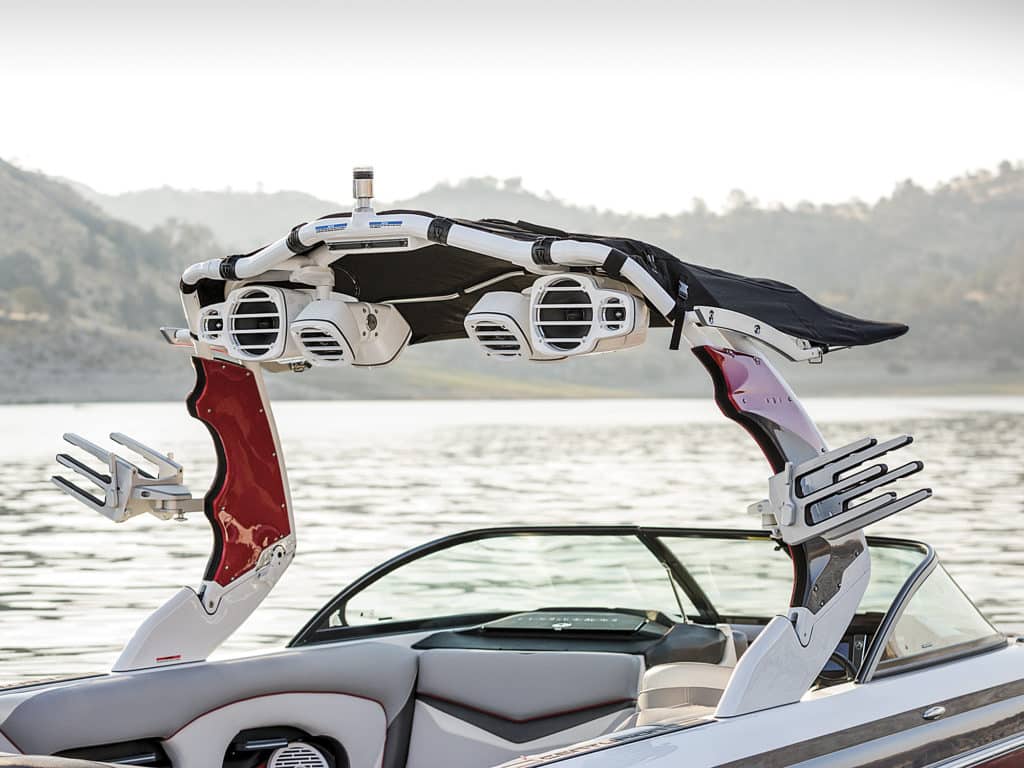
OFF-BOARD:
Centurion Downfire Speakers
Music is one of the best parts of being out on the boat with friends and family. Imagine some of your best times out at the lake, and chances are there are songs that go hand in hand with those memories. Music can make or break a day on the boat; whether you’re trying to psych yourself up for learning a new trick or chilling on your way back to the dock after a long day, a good audio setup is a must. Centurion’s unique Downfire marine surround- sound system ensures everybody on board is going to enjoy some tunes. Rather than point all the tower speakers back toward the rider, Downfire spreads the sound around to all areas of the boat so every passenger gets better sound quality. The best part though is the multizone audio control. Utilizing a dual-zone volume knob, you can control how much audio goes where. So, if you’re tired of that crazy electro drum beats your buddy insists on listening to while he catches a frontside edge all morning, you can turn it down a bit.
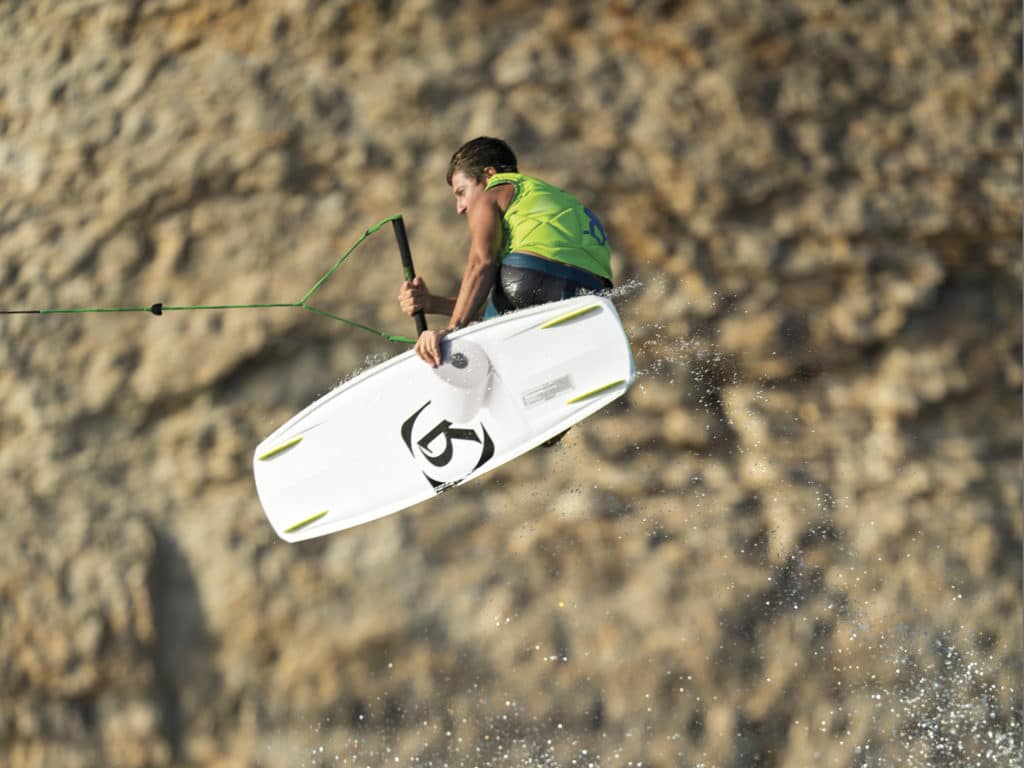
ON-BOARD:
Tigé TAPS 3
TAPS — the Tigé adjustable performance system — has been around since 1995, and in 2006, it was listed in Boating magazine’s 50th anniversary issue as a milestone in the last half-century of boating innovation. After years of advancements, TAPS 3 takes wake shaping to new levels. Adjusting TAPS on the fly, riders can change the shape and size of the wake and wave, as well as transfer waves while wakesurfing. The center plate gives you control over the running attitude, planing and maneuverability, as well as wake-shape control for wakeboarding. The outer plates will engage when you’re set up for wakesurfing to create list, yaw and draw. Simply put, TAPS allows you to tap into serious wake-making potential. Pun intended.
WHAT ERIK RUCK THINKS:
“TAPS works so well because it’s more than just a trim tab or wake plate, it’s designed to work in conjunction with the convex V-hull. TAPS 3 adds a whole other level of versatility in both wakeboarding and wakesurfing.”
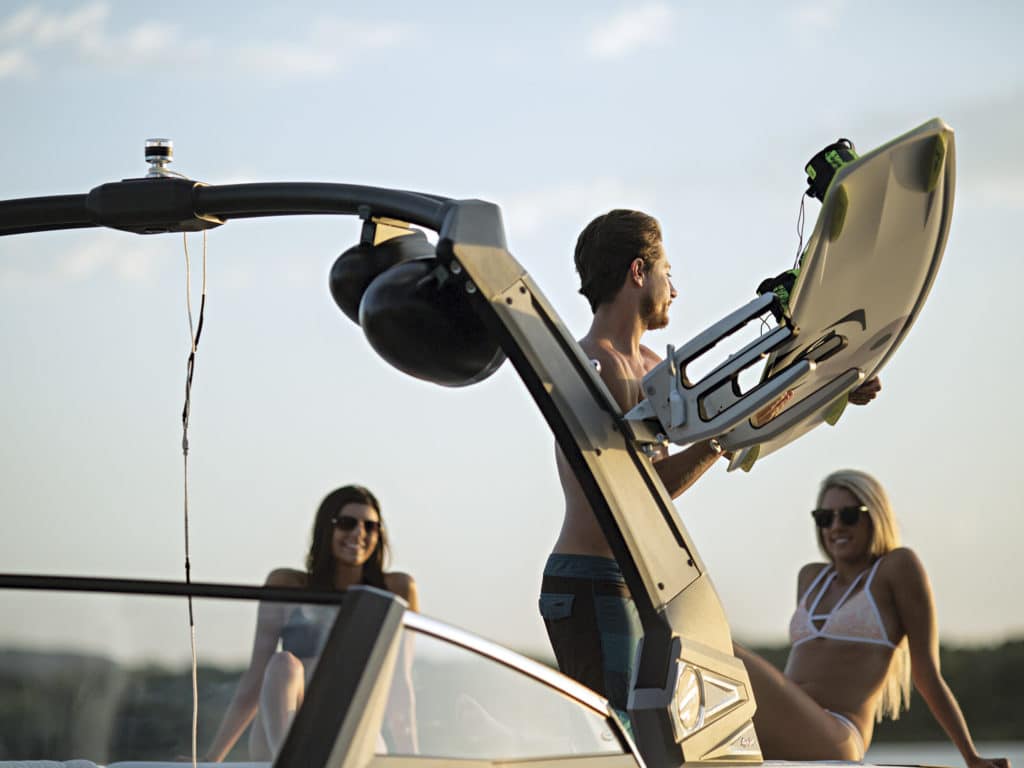
OFF-BOARD:
Tigé Alpha E2 Tower
Boat accessory setups used to be much simpler. You had a pylon for the rope, and everything else went somewhere in the boat. Then we got extended pylons, after which came board racks and speaker mounts. Then came towers, with more racks and more speakers. The convenience and necessity of towers can’t be overstated, but their size can be cumbersome at times. As boats have gotten bigger, so have towers. They are wider, thicker and stronger than ever before. Back in the old days, raising and lowering a tower wasn’t too difficult to do manually by yourself, but these days you need a team. Thanks to the Alpha E2 tower, though, you don’t need anybody. The all-electric tower will fold itself down to the height of the windshield with just the push of a button. If you’re regularly on waterways with low bridges or have to stow your boat in a smaller garage, a setup like the Alpha E2 tower is a godsend. The only downside is the extra bicep workouts you’re missing out on from doing it yourself.
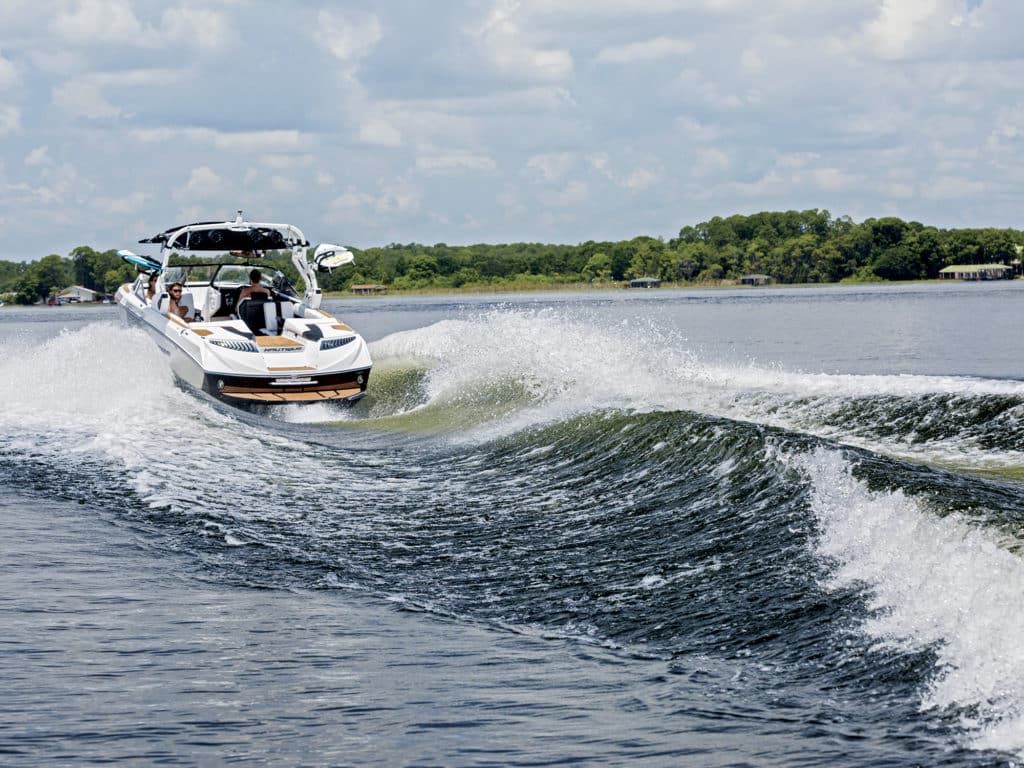
ON-BOARD:
Nautique NCRS
NCRS is one of the most important aspects behind the success of boats like the G23 that doesn’t get the attention it deserves. Short for Nautique configurable running surface, NCRS is designed to make your wake as customizable as possible with minimal effort. While most trim-tab systems are add-ons to a boat’s exterior, the NCRS tab is part of the running surface, which makes it somewhat unique. Like the traction control in your car, NCRS automatically makes adjustments based on user settings — how much help you want out of the hole, dialing in the shape of your wake — and dynamic conditions in the boat, such as load. Sensors relay conditional data to the LINC system, which determines how far the plate needs to be deployed based on user settings, optimizing the running surface under any condition for every application in real time. Sound brainy? That’s because it is.
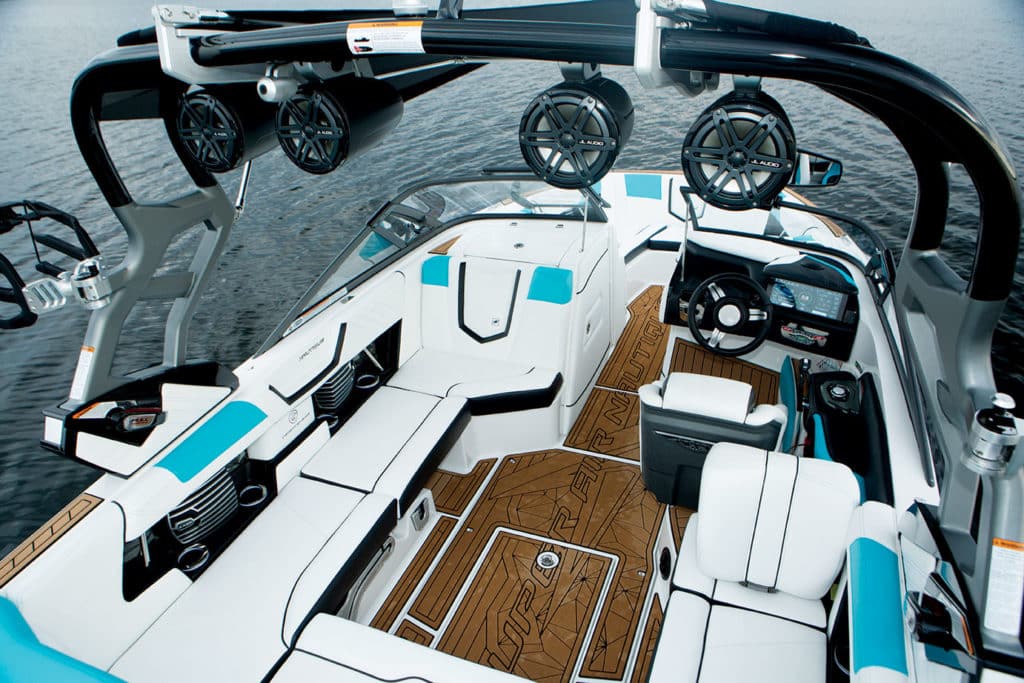
OFF-BOARD:
Nautique Comfort
OK, we get it, “comfort” doesn’t exactly scream technological advancement, but hear us out. If it wasn’t for Nautique’s development of the technologically advanced G23 hull and design, the extra level of comfort in the boat wouldn’t exist. The G23 turned heads when it was introduced, not solely because of its wake, but also because of its size. The gunwales were noticeably huge, but that allowed for a passenger experience unlike any other. Sit inside a G series, and you’ll see it’s got room for everything and everybody. When you’re loading up for a day on the water, nothing is more obnoxious than having to crawl over tons of gear. Add that to a lower-profile boat, and your knees could be in your chest all day. None of that is an issue in the G series though.
WHAT JEFF MCKEE THINKS:
“The gunwales on the G boats are so big, they make the interior extremely comfortable. It even makes people who aren’t comfortable on boats want to get out on the water and enjoy it.”
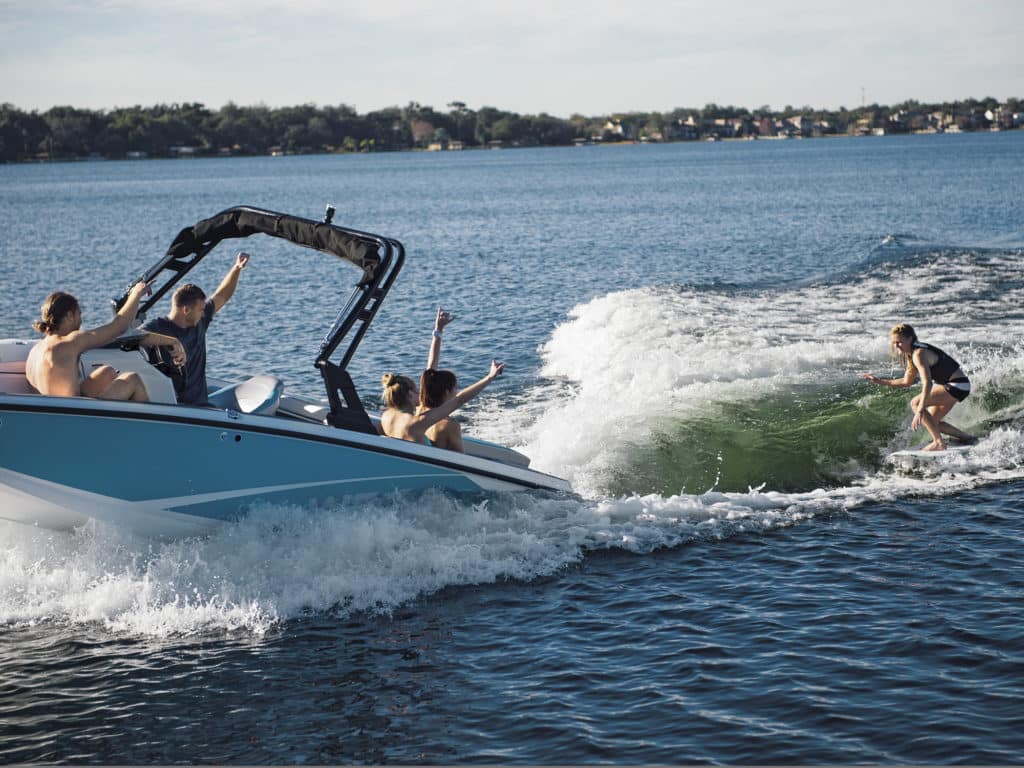
ON-BOARD:
Heyday Small Boat, Big Wake
At first glance, the WT-1 from Heyday can seem like a gimmick. Trust us, it’s not. In fact, what the WT-1 offers based on its size and MSRP is revolutionary. While this might not be any technological revolution, it took a lot of ingenuity to make a boat like the WT-1 possible. Besides, for a sub-20-foot boat to make solid wakeboarding and wakesurfing waves is a technological achievement in and of itself. The hull of the WT-1 was designed from the ground up to produce high-performance wakes without the need for any trim tabs or plates. To top off the size surprise, the WT-1 is easier to drive, easier to tow, and easier to stow all because of how small it is. They say good things come in small packages. We don’t know who “they” are, but chances are they’ve been riding behind a Heyday and having a good time doing it. “They” also say good things come to those who wait. And while it might have taken a while to get a truly affordable, legit wakeboat, the WT-1 is actually here.
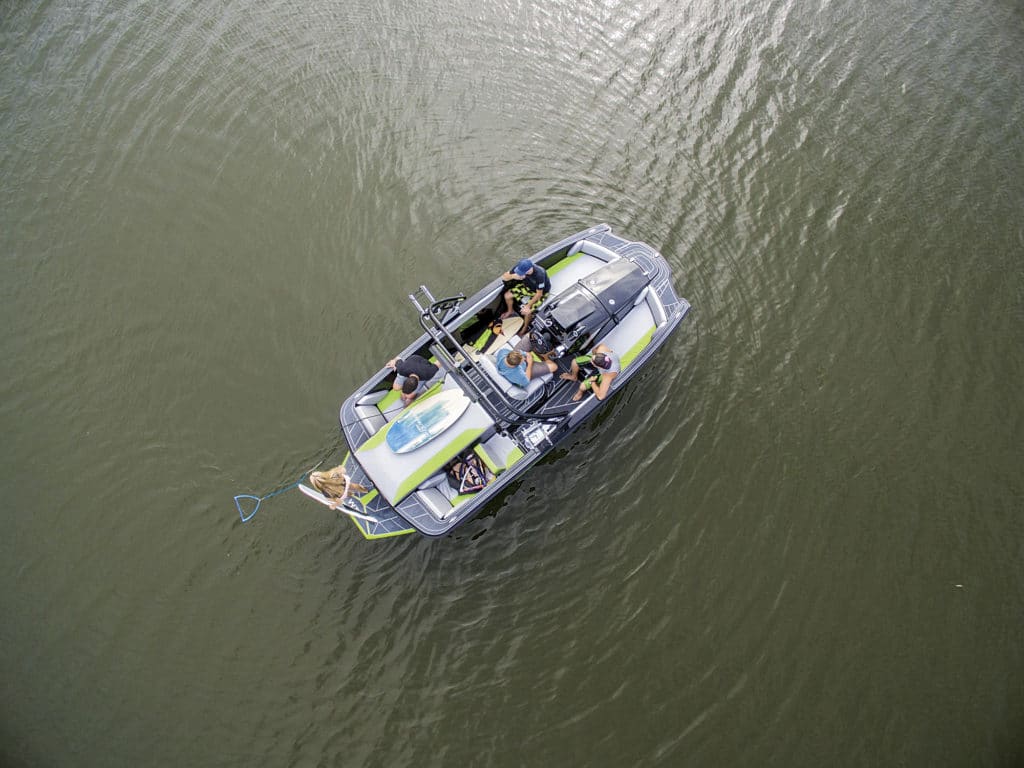
OFF-BOARD:
Heyday Center Console
The center console helm of the WT-1 is unlike anything currently available on the wakeboat market. With a boat as small as the WT-1, the social and seating arrangements are already going to be closer quarters than other boats, but that isn’t a bad thing. Maybe having to actually sit close to your friends will cause you to put your phone down and have a real conversation, or even watch your friends wakeboard and wakesurf. The center console puts the driver right in the mix, but not in a bad or distracting way. This layout also provides for unique seating arrangements that are vastly different from the standard that’s been in place for decades with V-drive boats. Ultimately, the WT-1 is different, but different isn’t bad. In fact, different can be really, really good.
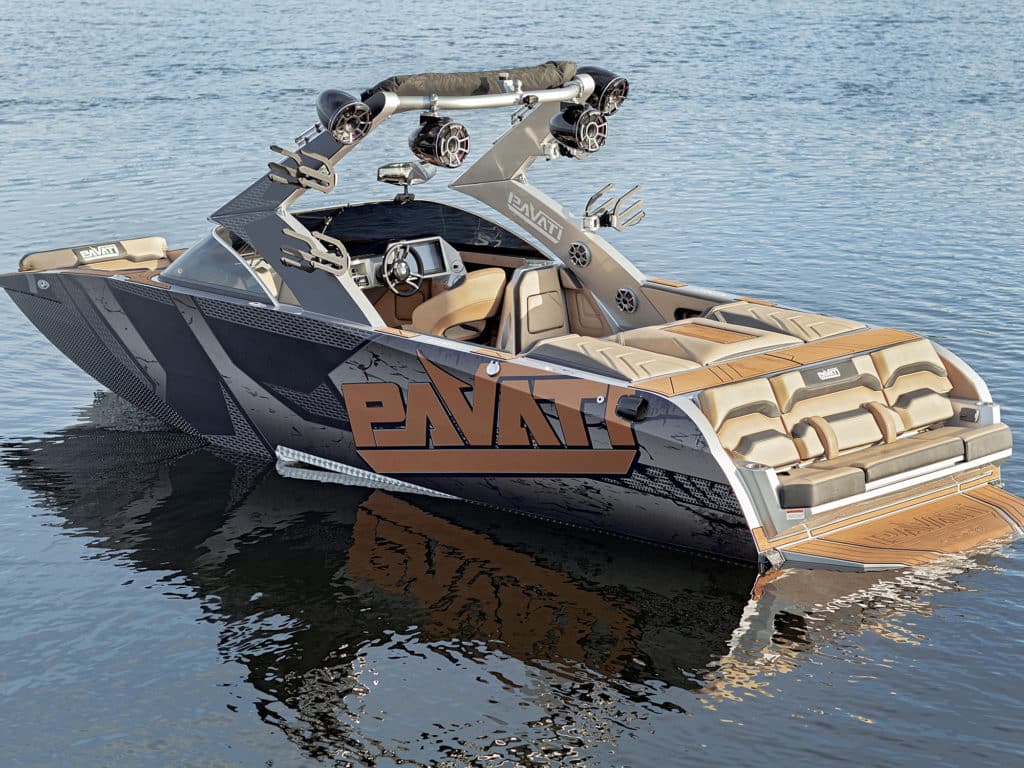
ON-BOARD:
Pavati All-Aluminum Design
Fiberglass has been the standard building material for wakeboats for years, but Pavati changed that with the AL-24, the first all-aluminum wakeboat. The advantages of aluminum are numerous, but the two biggest would be strength and weight. Aluminum is much stronger and more durable, meaning if you accidentally bang into a dock or want to nose up onto a beach, you’re likely not going to puncture the hull. As far as weight is concerned, because aluminum is lighter, it makes the Pavati easier to tow, better on fuel economy and faster. This also allows for bigger ballast tanks — 5,000 pounds of subfloor hard-tank ballast, to be exact. One of our favorite aspects of aluminum? Low maintenance. Fiberglass gelcoats require lots of care and wax because they don’t like the sun. Aluminum doesn’t oxidize like gelcoat and therefore doesn’t require the maintenance. Put your buffer away, you’re set. One extra cool fact: Aluminum is 100 percent recyclable.
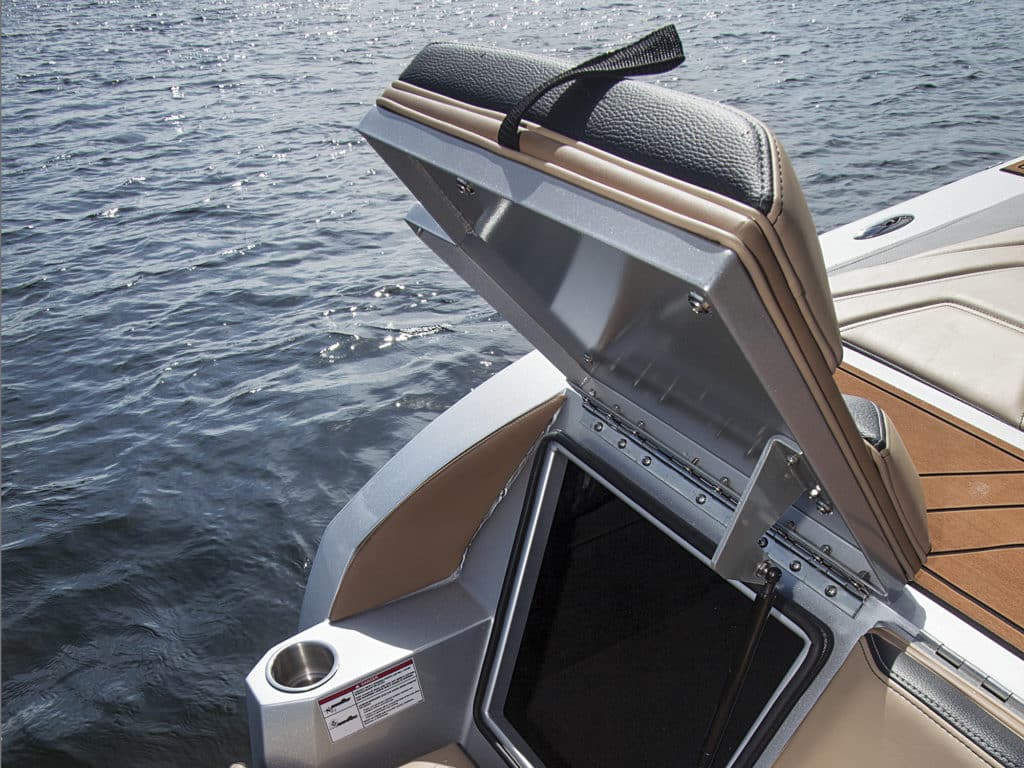
OFF-BOARD:
Pavati Storage
One of the downsides of being a member of a wake-focused family is gear. We always have too much of it, and seemingly never have enough storage. Not with Pavati’s designs, however. The aluminum construction of the Pavati line allows for more storage area. Lots more. Plan on fitting everything, including the kitchen sink, when you’re bringing your gear aboard the AL-24. From the unbelievably deep storage compartments under the seat, to the garbage and recycling cans in the floor, to the giant rear lockers accessible through the swim-platform seats, the Pavati has storage in spades. There are all sorts of other uses too. You can crawl inside and take a nap in peace, the kids can play hide-and-seek, and now you finally have an excuse to bring your entire kneeboard collection from the ’80s to the lake. While storage may not seem like a technological advancement, it is the advances in Pavati’s design techniques that made the creature comfort of enormous storage compartments possible.
